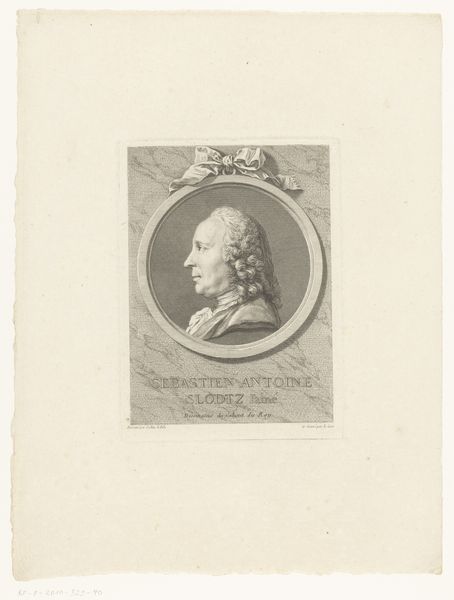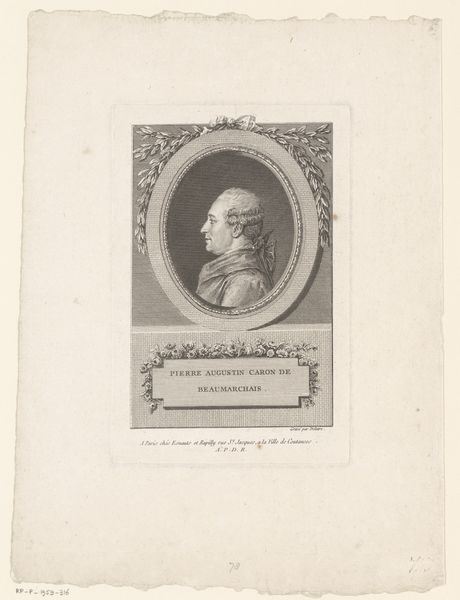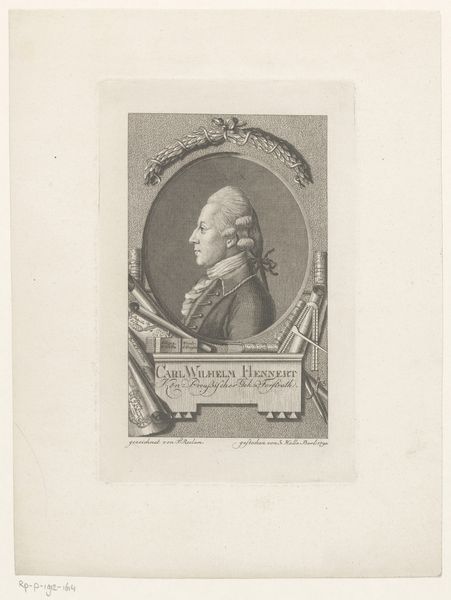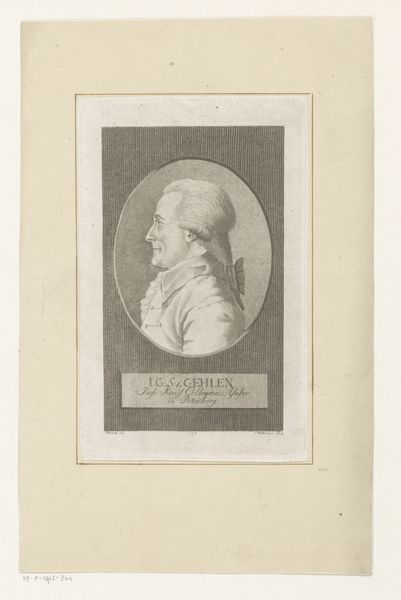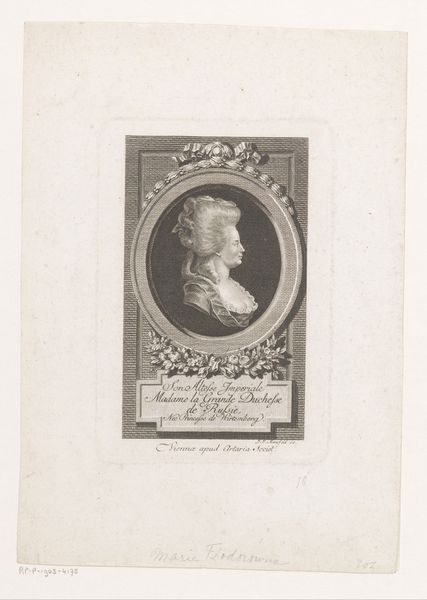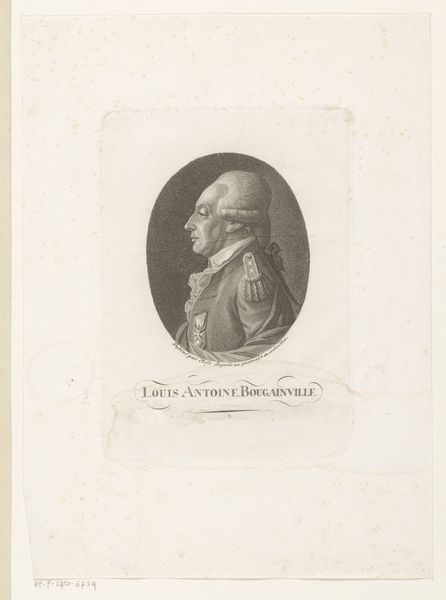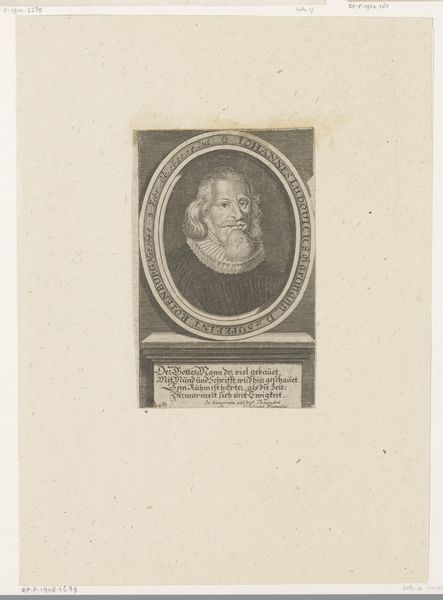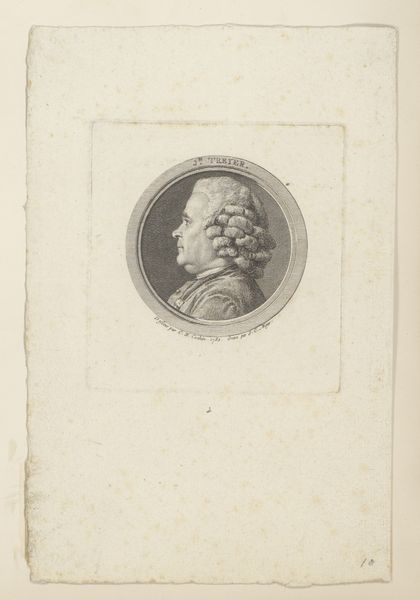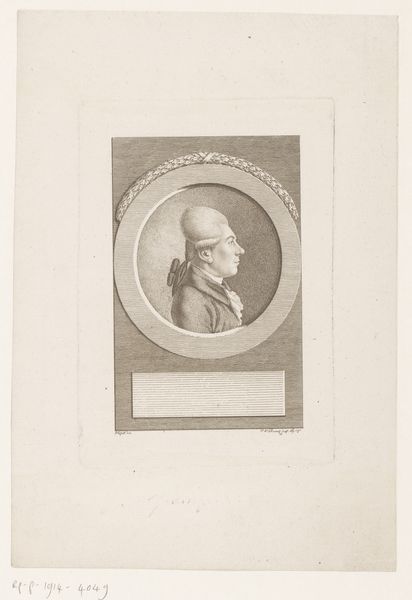
print, engraving
#
portrait
# print
#
figuration
#
line
#
history-painting
#
engraving
#
realism
Dimensions: height 216 mm, width 146 mm
Copyright: Rijks Museum: Open Domain
Curator: Before us, we have a print from 1802 by Augustin de Saint-Aubin, titled "Portret van Michel Eyquem de Montaigne," housed right here at the Rijksmuseum. What's your first take? Editor: Stark! The precise, unwavering lines give it a solemn, almost clinical feel. He's caged in that oval frame like a specimen. Curator: The engraving technique really emphasizes detail, doesn't it? Look at the texture of his fur-lined coat, the meticulous ruffles. It aims for realism, though filtered through the Neoclassical lens, obviously. Tell me more about the specimen idea... Editor: Well, Montaigne was famously skeptical. To be presented with the maxim “Que sais-je?” right below him like this feels ironic. And given what we know about Montaigne and gender, particularly from someone in my field, how does one interpret the placement of "Que sais-je" near his collar ruffles, which evoke a kind of queen-like frill? It raises a number of questions. Curator: “What do I know?” indeed! Montaigne championed self-reflection, questioning assumptions. Perhaps Saint-Aubin intended this almost scientific portrayal as an invitation to examine Montaigne's ideas with a detached curiosity. Editor: Detached, perhaps, but not neutral. Portraits are always statements, particularly those of figures with strong convictions. Saint-Aubin’s decision to place him within such rigid lines underscores the paradox: attempting to capture something inherently elusive. Curator: So the very act of portraying Montaigne is already a commentary. Do you think there’s an element of romanticization? Editor: The line work leans towards reverence, though it stops short of outright idealization. The age lines are still visible and are even accentuated. The frailty perhaps? Curator: A frailty befitting a man of thought, wrestling with his own contradictions, immortalized within an intellectual frame. It invites scrutiny, even of itself. Editor: Well said. Saint-Aubin gives us a Montaigne to grapple with, not to simply admire. What do you make of it as a student of artistic vision? Curator: I find the stark simplicity elegant. By stripping away unnecessary adornment, Saint-Aubin invites us to confront the essence of Montaigne’s intellect. Perhaps that's where the truth resides. Thanks for offering the deeper context on "Que sais-je!". Editor: Always a pleasure to connect theory and artistic representation. The lines certainly continue to be of great use to theorists like myself.
Comments
No comments
Be the first to comment and join the conversation on the ultimate creative platform.
